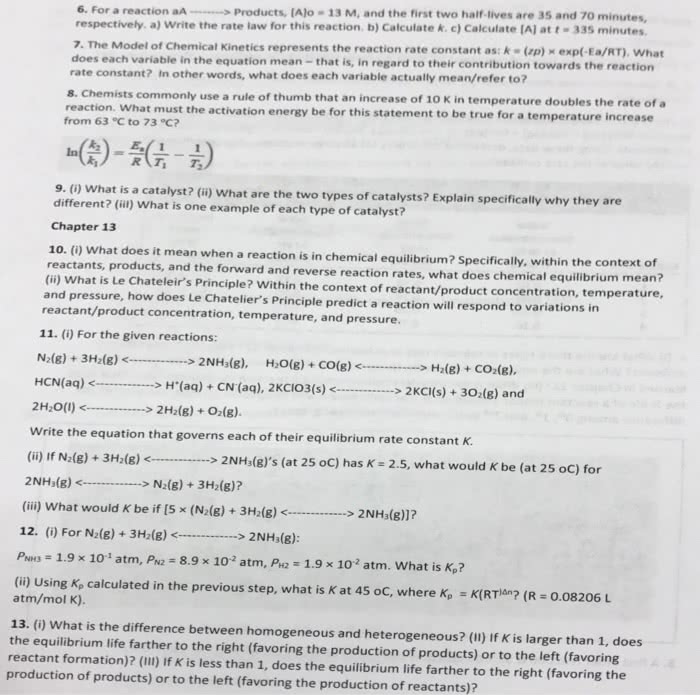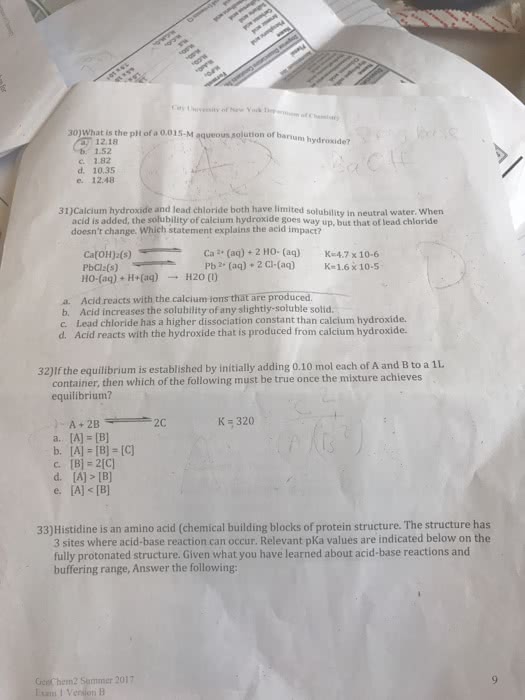CHEM 1000 Lecture Notes - Lecture 3: Chemical Equilibrium, Reaction Quotient, Hydrogen Sulfide
Document Summary
One of the most important things to understand about chemical equilibria is that they are dynamic, meaning that once an equilibrium is established, the reaction doesn"t stop. The compounds continue changing, but at a rate that leaves the overall concentrations equal. (1) h2 + o2 h2o (-1) h2o h2 + o2. So, using our general chemical equation, we can develop a few simple equations to determine the equilibrium constant for a reaction. aa + bb gg + hh. If (cid:449)e (cid:449)a(cid:374)t to t(cid:396)y to (cid:373)ake se(cid:374)se of these diffe(cid:396)e(cid:374)t k (cid:448)alues, (cid:449)e (cid:272)a(cid:374) say that a . Example - an equilibrium is established for the reaction shown below. Determine kc for the reaction (cid:449)he(cid:374) the (cid:272)o(cid:373)pou(cid:374)ds a(cid:396)e (cid:272)o(cid:374)tai(cid:374)ed i(cid:374) a 3. 00 l (cid:448)essel, if a(cid:373)ou(cid:374)ts of ea(cid:272)h p(cid:396)ese(cid:374)t at e(cid:395)uili(cid:271)(cid:396)iu(cid:373) a(cid:396)e . 0. 4434 g hydrogen gas 2h2s 2h2 + s2. The reaction quotient is a tool that helps us see how an equilibrium will shift if additional products/reactants are added.



